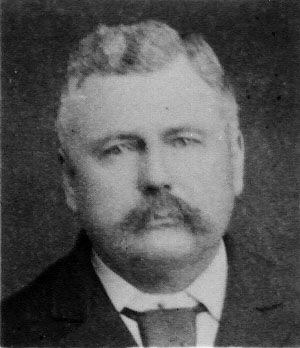
Tucked away in shady canyons throughout the west are deserted mining towns. (Photo on left is Silver City, Utah in its heyday.) Once prosperous communities filled with saloons, humble shacks, boarding houses, hotels, a church or two, a school and a few stores; now they are all gone. Few traces are left: an old foundation, the steps leading to a church building or a lilac bush where someone’s house once stood.
My mom was born is such a town––Silver City, Utah. Just the name of the community gives a hint of what took place in this long forgotten ghost town. Once filled with the boisterous activities of a booming mining community, now only silence reigns as the lonely wind blows through sagebrush and over deserted dirt roads. Only in the memory of its former residents does it live. My aunt Ethel remembers…Here we went to school. (Photo on right-all that is left now is the concrete stairs.) This was where our mom planted flowers to beautify our yard. A big tree stood by our house and we had a rope we loved to swing on. There was an outhouse in the back and a small shed where mom took in boarders.
To keep a community going, many different occupations were needed: store keeper, hotel manager, miner, laborer, team driver, assayer, saloon keeper, teacher, preacher and of course homemaker for those miners lucky enough to be able to marry or bring their families to live with them. Not to be forgotten were the farmers, butchers and dairymen from the surrounding communities needed to supply food. (Photo on left of Jesse Knight smelter in early times.)
Reading through a census from the prosperous times of any of these mining towns shows a vast collection of immigrants from all over the world drawn by the promise of a steady living for their families. In the 1910 U.S. census, Silver City had miners from: Serbia, Germany, England, as well as various areas of the United States: Colorado, Ohio (photo on right of my great grandfather Wm. Marion Johnson from Ohio), and California. All brought by the promise of a good job and getting rich, if they were lucky enough to stake a claim that produced. Few became rich, but it was the American dream. Many lost their lives in this dangerous profession.
The town started to go under when the mines got water in them. It couldn’t be pumped out to make mining profitable, so the workers and their families pulled up stakes and headed to the next boom town. In time everyone left the once bustling community and now it lies forgotten and empty.


